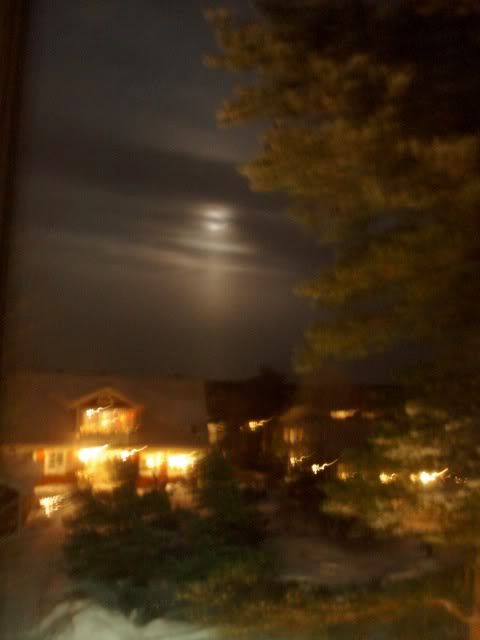
In the summer 2002, we were on the lookout for a replacement for Carolina, the narrow, well-sailing “RJ-85” sailboat we had bought while we lived on the West coast (our third or fourth boat, was this). One of the stepsons wanted to take over Carolina, if we were thinking of getting something bigger and more comfortable for our vacations. For some reason I believed that a more reliable (with inboard engine) and spacious boat would be the only thing I needed to be happy for the rest of my life, and if I didn’t get it, my life would never be what it should have been, given my interests and background! The first possible craft we decided to look at was a “Schelinkryssare” (a 35 ft cruiser designed by Oscar Schelin) from 1971. She was called Marilyn, and for sale through a yacht broker in Stockholm.
I hopped on board, and looked with disgust at the far from ship-shape mess on deck, and all the things that were broken, misplaced, filthy, rusty or dented. Ropes left on deck everywhere, the sails attached to wires in the mast that were not running straight and free for hoisting, the wood on the cockpit benches was rotten, and the steering-wheel was dysfunctional. The cabin smelled unpleasant, there was green-ish water under the worn but nicely varnished floor, the propane stove with its old bent pipes and fittings made me look for the emergency exit and pray that none of the other prospective buyers would light a cigarette when on the ship, the bunks and the cabinets needed repair, the hull isolation was filthy and ugly, the electric system needed immediate replacement, there were signs of water-leakage through the top door, et cetera. Much work. Not worth the fairly high price. However, the sails seemed to be both new and okay (even if the rig looked ridiculous), the 27 hp diesel engine reliable and quite new (but a high-risk: fixed on just three of four mounts, all rusty), and the hull seemed strong and well built. And the poor wreck had a soul… So I was quite taken, and couldn’t leave her until I had walked the deck two rounds more, trying to notice all the faults!
In my fantasies, I could see, hear, and feel what it would be like to own a boat with a personality like that, and appreciate the possibilities and advantages of this model. I also imagined my grandchildren in the future would say, “When we were small and sailing with Grandma on Marilyn“… I wanted so much to be someone possessing an old plastic 35 ft sailboat with an old-fashioned, beautiful light grey hull, a blue line and a nice name, so I could not think of much else, or sleep, but had to get up in the middle of the night and look at myself in the bathroom mirror and weep hysterically! We looked at other Schelin:s, at several different other models, and weighed price against what needed fixing. Sometimes we were tempted to buy one of the practical, clean, nifty, good-enough, plain but well-equipped and reasonably priced boats we found. But we never could agree on which one.
The summer months went by. I took a navigation course in the autumn, to have a systematic brush-up of the stuff I almost already knew, and to get a navigation certificate. I returned to visit Marilyn, every time I was in town! When she was sold, I went there to say goodbye to the ship, and talk to the yacht broker. I asked what price they finally had agreed on, and if there had been anything reported from the hull inspector. There was no special discount, as there had been no evidence of any severe faults. The buyer was a carpenter from Denmark, who had remarked, “Good for me to have some work to do, or else I will drink too much beer!”
After the navigation course was completed, the instructor offered an opportunity for a practical exam, consisting of navigation exercises and manoeuvre training onboard his motorboat — in his hometown, an hour south of Stockholm. I signed up, but got extremely anxious about the entire event. It was to take place on a weekday in November or early December, so the prospect of being at sea at that time of year was unpleasant, and the idea of travelling alone, that far away and early in the morning, made me feel completely at a loss. I contacted another woman from the course, and she offered to help me out with a hike from the University, if I could make it to the Statoil filling station there on my own, and meet her at 7 AM. Thankfully, I got ill, so I had a reason to cancel it without feeling like a fool.
Just before Christmas, my husband heard from a colleague in Finland that there was perhaps an interesting boat for sale in Turku. A widow with an “H-35” from 1981 (a 35 ft cruiser, a well-sailing quite modern boat by a Finnish yacht designer) was thinking of selling it. We got a report from a first inspection on site. “Nice boat, but the ‘skitigaste’ (=filthiest) thing I have ever seen”, said our friend. Negotiations with the widow started, held in a mix of Swedish, English, German and Finnish, to be understood. Husband and son went to Turku with a passenger ferry, to have a look. Enthusiastic (or – the son – rather indifferent, disillusioned and tired of all the previous arguments) they called me and asked if I could agree on taking this fantastic chance to get a boat with great possibilities, at a bargain price!
“Okay; of course…” (What could I say?)
At Christmas 2002, I was writing on my first and only work for orchestra, Winter into Spring, or Töväder (Thawing Weather), something I was really serious about. Hubby was thinking, talking and dreaming about how to transfer Euro money for the boat payment, how to fix a boat transport and how to start the boat renovation.
A Friday evening in January 2003, we got on a small car ferry from Frihamnen in Stockholm. It was a beautiful night, with a full white moon shining over dark islands, dark water, snow and ice. Chunks of ice in the shipping channel were hammering on the ferry hull, all the hours we went through the vast archipelagos on both sides of the Aland Sea. I could hardly sleep, mostly because I was so fascinated by the landscape outside, and the other unfamiliar sensations. We arrived in the grey morning, and got our car off the ferry in Turku, drove through the town and out to the sleepy suburb where the boatyard was situated.
“And here she is – our new boat.”
“Uh-hu. Nice.”
(That? The ugly, wet, sad thing with a snow drift on top? Did I borrow a fortune from mother, only to spend it all on this practical joke? My God – what a bargain! My life is over now, absolutely over. This is The End.)
I climbed the ladder, which a kind owner of a neighbour boat had helped us with, and silently started to inspect my new ship, beginning with clearing the deck from as much ice and snow as possible. There was solid ice in the engine room, too. And water in the cabin, dripping everywhere, through leaks in the roof, from the melting snow and ice on deck. A lot of woodwork was in bad condition from this neglect to cover the boat properly for winter. The radio and the VHF telephone were dripping, also. There was an ugly old propane stove, with bent pipes and suspect fittings. Et cetera. And not even a trace of a soul. This boat was dead. Gone. Beyond rescue. Just a piece of indestructible fibreglass.
The seller arrived. She was a tiny and elegant woman, in fur coat and small boots, but she jumped onboard like a cat or athlete, without using the ladder. She laughed happily at everything we said, and smiled at the Swedish-speaking gentleman who functioned as her driver, interpreter and technical expertise. When she understood that we had actually bought the boat, liked and wanted it, and had the intention to move it to Sweden the same afternoon, she was so happy so she had to demonstrate her ability to stand on her head, there, in the snow! From other sources, and from evidence in the boat, we learned that this Moomin character (and her late husband) had maybe been fond of the more pleasant aspects of boating. For example, beer. During the renovation, we found that it was not possible – in any one of the 35 ft of this ship – to be out of reach of a beer bottle opener. There were a dozen of them, mounted with great care, in the most imaginative places. The maintenance of and care about the rest of the equipment, on the other hand…





